Vik Muniz Creates Works Of Art From Waste. YEET MAGAZINE Interviewed Him.
His Approach, Fascinating, Is at the center of the documentary "Waste Land". Nominated for the Oscars.
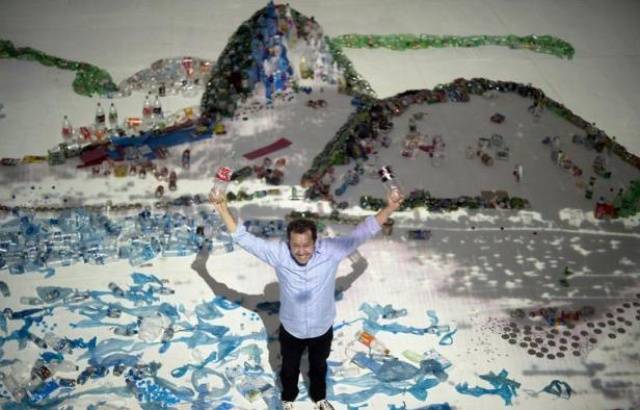
By YEET MAGAZINE | Published 1248 GMT (2048 HKT) June 17, 2021
His Approach, Fascinating, Is at the center of the documentary "Waste Land". Nominated for the Oscars.

For Vik Muniz, a Brazilian artist known for his figurative and monumental compositions of found objects, recycling is not just an artistic technique.
It is also synonymous with rebirth and civil engagement influenced by the social conditions of Brazil, where he founded art and technology schools for young people living on the streets, and by the symbiotic relationship that operates with nature and the environment, manifested in particular by the use of organic waste in the artist's creative process.
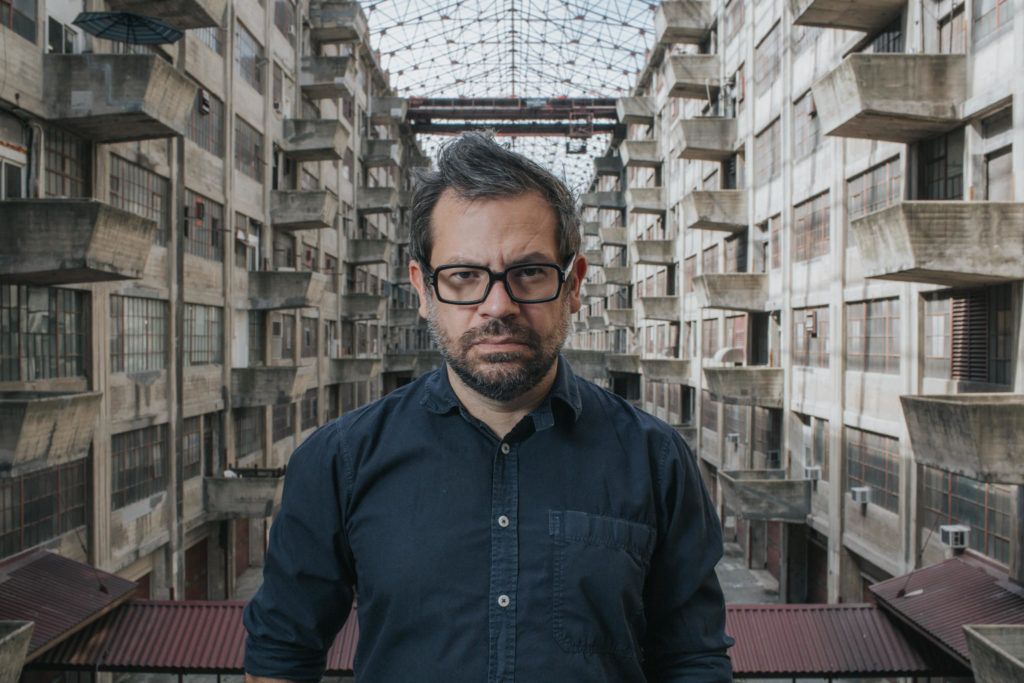
But recycling offers above all a key to reading for works full of enthusiasm, playful and elegant touching deep themes and of a unique intensity, which reflect the empathy and ecological commitment of the artist.
Waste land
From a young schoolboy keen on drawing at the back of a class in Sao Paulo, he has become one of the most famous contemporary artists in Brazil. He left to set up his workshop in the middle of Jardim Gramacho's rubbish dump. He sold works made entirely of garbage to millionaires. He transformed waste into artistic compositions. And he came to answer our questions. Meet Vik Muniz , star artist of the documentary Waste Land , in theaters this week.
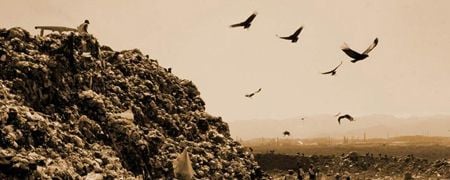
YEET MAGAZINE: The film addresses the issue of recycling and ecology. Is this ultimately what you are doing, artistic recycling?
I think that everything humans have done from the start somehow involve the idea of recycling. In any activity, there are very simple ideas which then become more complex, undergo variations, linked to human diversity, the variety of experiences. We try to survive, to perpetuate the species.
I think the mess is an effect of modernity. Before the Industrial Revolution, people reused what they had. The idea of recycling as a necessity is quite new.
I recently read that 65% of the food we produce is thrown away. It's incredible ! There used to be no such thing, people produced exactly what they consumed. Art is a bit the same! We refresh people's attention on things that already exist.
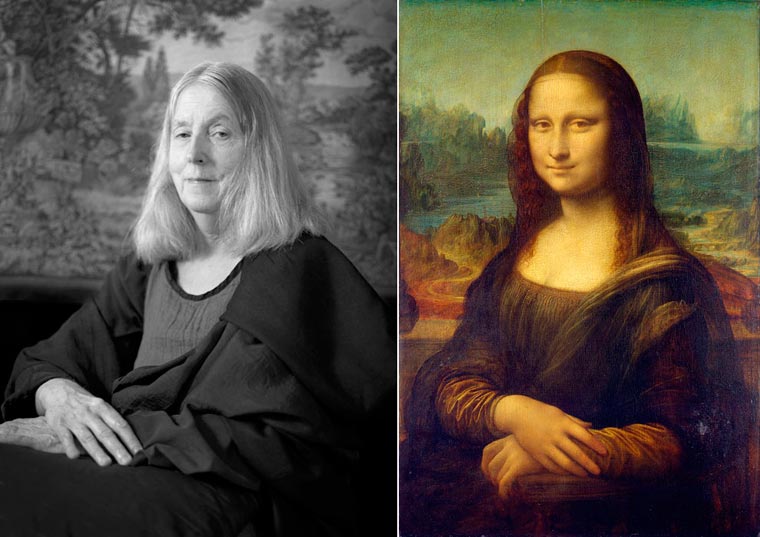
The artist is a kind of gleaner. He sees the things that remain, the residues of the experience, he takes them and highlights them for people to re-look at and find them beautiful. The artist points out things that we do not look at. This is what catadores do[this term refers to the people who collect and sort Jardim Gramacho's waste, making a living selling what can be recycled], they are always looking for what is reusable. The creative experience is a bit like that: we reuse what people have left behind.
How did this artistic approach come about, the idea of working with catadores ?
When I met the catadores , I was really surprised by their personality, their way of working. I expected to see sad and tired people, but instead I saw very worthy people who work in a pretty great ethical structure. Lots of camaraderie, a pride in being there, a huge sense of humor.
This is where I envisioned the possibility of collaboration. They immediately pointed out to me the parallel between what they were doing and what I was looking for. I said to Fabio [Fabio Ghivelder, Vik's collaborator] : “We're going to work with these people, we're going to bring them to the studio and we're going to do their portraits, because they're great! "

How did the film project come about? C ow have you been approached by the filmmakers?
The project to work on waste had already existed for a few years. Fabio and I went to visit one of the worst landfills in Brazil. The traffic chief over there is 13 years old. When we went there, people were guarding the dump with submachine guns, because they were hiding drugs among the garbage. So we decided to go and work in larger structures, waste reception centers.
We have produced a series of works for five years. When the producer of the film came to see me, he wanted to make a documentary about my journey. Parts of the film are also taken from a documentary that was made ten years before, Worst Possible Illusion: The Curiosity Cabinet of Vik Muniz.
I told him that I had already done this, that I wanted to do something else, and he directed me to Lucy Walker. So I met her in Newcastle, England, four years ago. I suggested to him, rather than making a film about my career, to make a film about a series of works from start to finish, from the moment we imagine it to the exhibition.
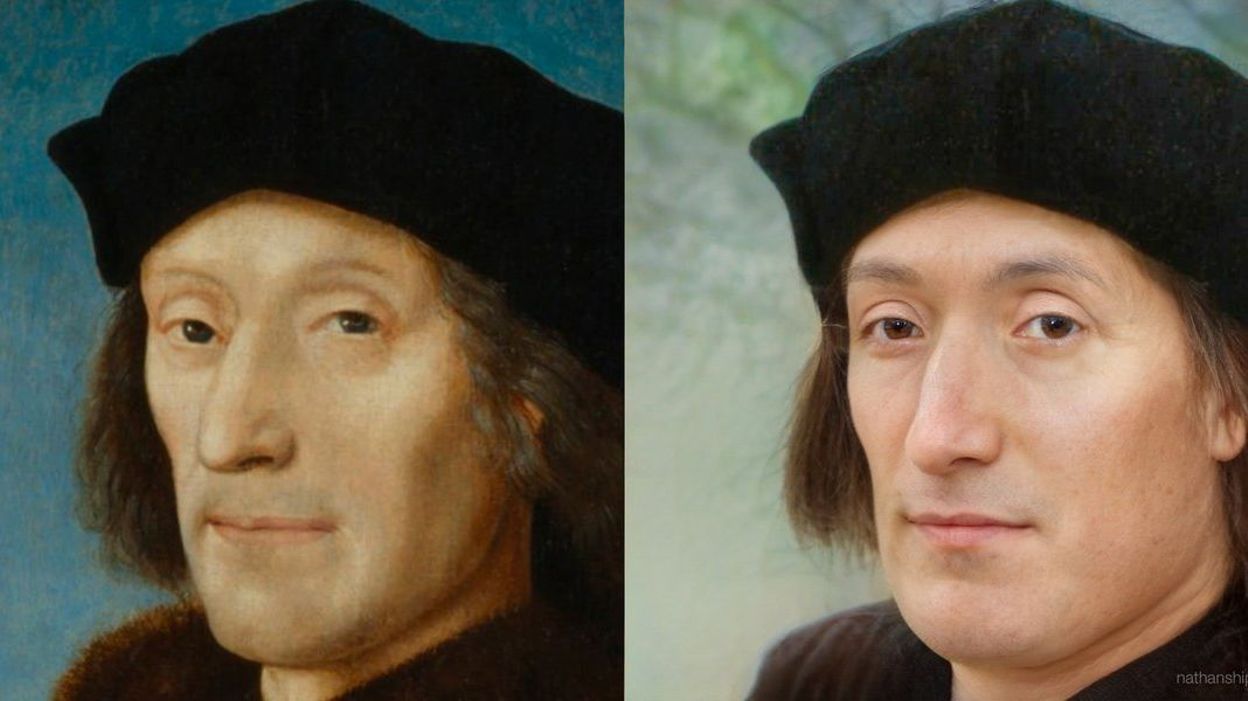
She agreed, and we decided to focus on the recycling center, because she had also been marked by a visit to a recycling center in New York. Two weeks later, we were in New York, as you can see in the movie.
We called the manager of Jardim Gramacho, who gave us access. Because we can't go back like that! At first, Lucy wanted us to design the works inside the recycling center, which was not possible.
I have remained faithful to the photography project. Lucy then left to direct her movie Countdown to Zero, and it was João Jardim who replaced her. He who comes from a rather bourgeois background was very touched by people.
He really entered the life of catadores , he followed the characters ... His first cut lacked a little sensitivity. Lucy then came back and carried out the project exactly as it was envisioned before. The result is the film.
What would be your most vivid memory of this great adventure?
He's in the movie! This is the moment when Magna holds her portrait, looks at it and says, “You can't imagine how valuable this has to me. And when she says that, I almost say it with her: "It's you who can't imagine the value this has for me!" "For someone who has never been to a museum to look at a picture that was made by us and say that is very important to me. She said that with a lot of wit, sincerity.
And for me, it's great! At the start of my career, I was primarily looking for support from critics, curators, etc. Once I had all of that, I became more interested in the audience, and especially people like Magna. If you only do things for your own social class, you lose sight of the universal dimension of art.
For me, the most important thing is to be able to witness an artistic experience that emerged in a situation where there was neither the material nor the experience. Art is something powerful, which really happens to change the way people see what is around them, and especially about them.
I carried this project for three years, and a lot of things aren't in the movie, but I've seen these people change. The film doesn't show it like I saw it. The way these people look at themselves has changed completely, precisely because they have spent a little bit of time outside of this reality, of the dump routine.
They were blind to their situation, and doing that changed everything in their lives. And it continues… Art is something powerful, which really happens to change the way people see what is around them, and especially about them.
I carried this project for three years, and a lot of things aren't in the movie, but I've seen these people change. The film doesn't show it like I saw it. The way these people look at themselves has changed completely, precisely because they have spent a little bit of time outside of this reality, of the dump routine.
They were blind to their situation, and doing that changed everything in their lives. And it continues… Art is something powerful, which really happens to change the way people see what is around them, and especially about them.
I carried this project for three years, and a lot of things aren't in the movie, but I've seen these people change. The film doesn't show it like I saw it. The way these people look at themselves has changed completely, precisely because they have spent a little bit of time outside of this reality, of the dump routine.
They were blind to their situation, and doing that changed everything in their lives. And it continues… but I saw the change in these people.
The film doesn't show it like I saw it. The way these people look at themselves has changed completely, precisely because they have spent a little bit of time outside of this reality, of the dump routine. They were blind to their situation, and doing that changed everything in their lives. And it continues… but I saw the change in these people. The film doesn't show it like I saw it.
The way these people look at themselves has changed completely, precisely because they have spent a little bit of time outside of this reality, of the dump routine. They were blind to their situation, and doing that changed everything in their lives. And it continues…
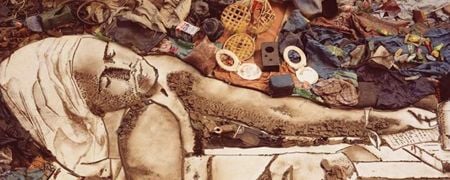
You were born into a working class family in Sao Paulo and today you are one of the most famous Brazilian artists in the world. Can you quickly come back to your journey?
Quickly, it would be difficult ... I feel like I did all I could do before deciding to start a career in the visual arts. I started drawing very early because I had difficulty reading. My grandmother taught me to read when I was 4, but she did it the way she learned herself. She's an amazing woman, she's in the movie. She made me memorize the format of each word, that's how I learned to read.
When I got to school, I couldn't write, I didn't understand the syllable system at all because I learned to read visually.
So I started to make small drawings to illustrate the words, and I became the child who draws at school, the one who sits behind and who makes the teachers' caricatures. After a moment, I got a scholarship to study drawing.
I was 14 and it changed my life. When drawing, we use a part of the brain that we do not use, which is atrophied. The practice of drawing therefore opened my mind a lot. What do we see in an image?
Why do we see a world in an image? I started devouring texts about image perception, obsessing over images and becoming interested in them through psychology. I tried twice to study psychology but failed the exams. So I got into advertising, which was my second focus.
It was my first job. Afterwards, I arrived in the United States, where I wanted to do theater, and where I strolled a bit. I had a lot of artist friends. One day,Jeff Koons . It echoed with my perception of the world.
I had been trained as a consumer, and I saw the reality of what 80s artists were doing in America (minimalism, pop,…). I remember seeing Cindy Sherman's first film , and then I understood it all!
Is the cinema important to you?
Very. I have no prejudices when people talk to me about the media. I read the classics, and at the same time I have a Wii, I love video games ... I love animation, and I have friends who are great animators, like Carlos Saldanha who just did Rio . I love what they do, I think animation is really the art of the future, more than cinema.
This is where we find the most wonderful things. Otherwise, my current reference in the cinema, someone who thinks like me and who took a little the same direction as me: Michel Gondry. He is someone who does not want to just create illusions, but rather to show how one needs illusions to live.
He is not in the search for perfection. This is what I do, I create illusions but I always leave the strings behind so that people can step into the process and see how it's done.
For me, the process is much more interesting than the finalization. A work of art that does not let us imagine how it was made does not interest me. I love films that let you imagine how they were made.
I love to enter the history of the object itself. Throughout the history of cinema, I have always loved the people who have worked with this concept, this ambiguity: showing reality through illusion, but not ignoring the tools, the manufacturing. At Fellini for example,
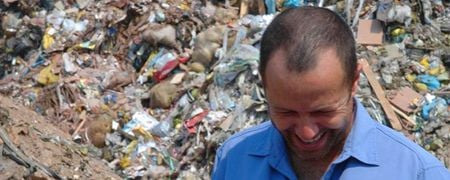
As an artist concerned with poverty and ecology, what is your perspective on current events in Japan?
It makes me see how precious life is. It is a miracle that we are here. There is a book by Bill Bryson called A Short History of Nearly Everything, which begins with these words: “ If you're reading this, you're a champion. Because since the Big Bang, the chance that you have to be aware and to have a system that allows you to read is really great.
Not only to develop a material ecology, but also to develop an ecology of consciousness, of the gaze. Seeing things in a more lucid way will allow us to make the world a more livable place.
Rio: the bay recomposed in the form of recycled waste

Garbage recycling gained new notoriety on Saturday thanks to an installation by Brazilian visual artist Vik Muniz, near the Museum of Modern Art (MAM) in Rio, on the sidelines of the UN conference on sustainable development Rio +20.
You have to climb a footbridge ten meters above the ground to see the bay of Rio reconstituted in recycled material: bottles, glasses and plastic bags, beer or coke cans, cardboard milk cans and capsules.
This 30 meter x 40 meter installation began on Friday and will continue until the end of the summit which will bring together more than one hundred heads of state and government from around the world, from the 20th to the 22nd.
It is the audience of the People's Summit, organized by civil society in the Flamengo Park where the MAM is located, who brings the waste.
"He can be content to observe the work or participate in it by placing his own equipment in it, under the guidance of monitors from my team," Vik Muniz, 50, told AFP on Saturday. .
"It's a collective aesthetic construction from ugly stuff and the goal is to invite the public to create this image," added the artist who lives between New York and Rio.
"I'm not going to change the world with that but it is a space for meditation on the city, the opportunity to wonder about what we can do with these materials to which we do not give any importance", says the one who introduced the world to the waste sorters of Gramacho, the huge open-air dump in Rio, through a documentary "Waste Land". Nominated for the Oscars, it was screened at a major exhibition dedicated to the Brazilian artist in the Lambert collection, in Avignon (south-eastern France).
“I did something similar in Avignon: from the top of a footbridge installed in the Célestins church, you could discover a landscape of branches, dried flowers and herbs, on the model of Van Gogh's Sower. very good, Provence, ”he said.
The Waste Land Trailer
DISCOVER THE COLLECTION


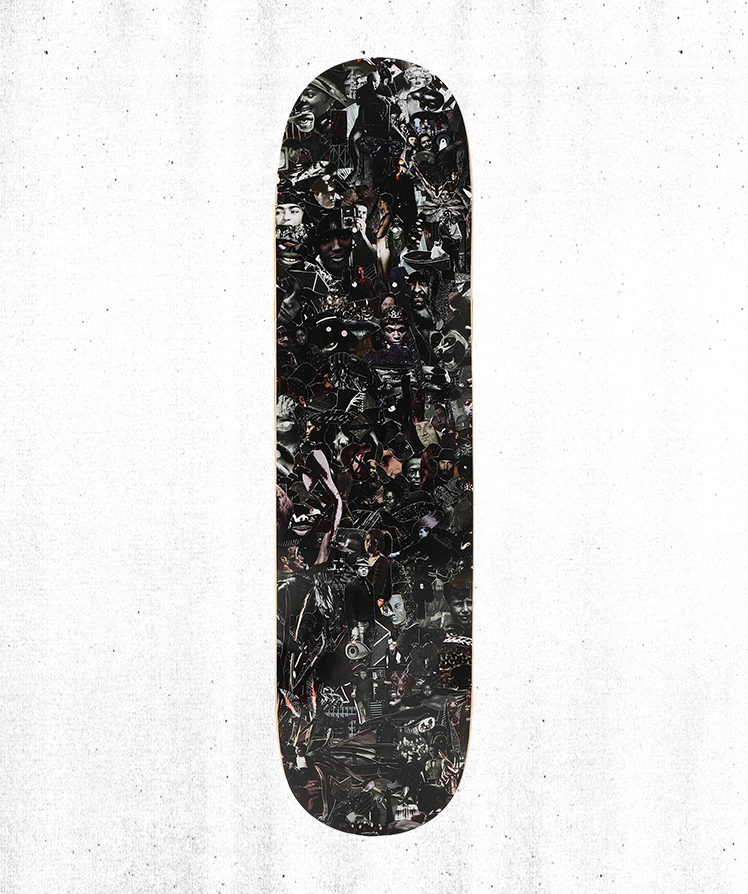

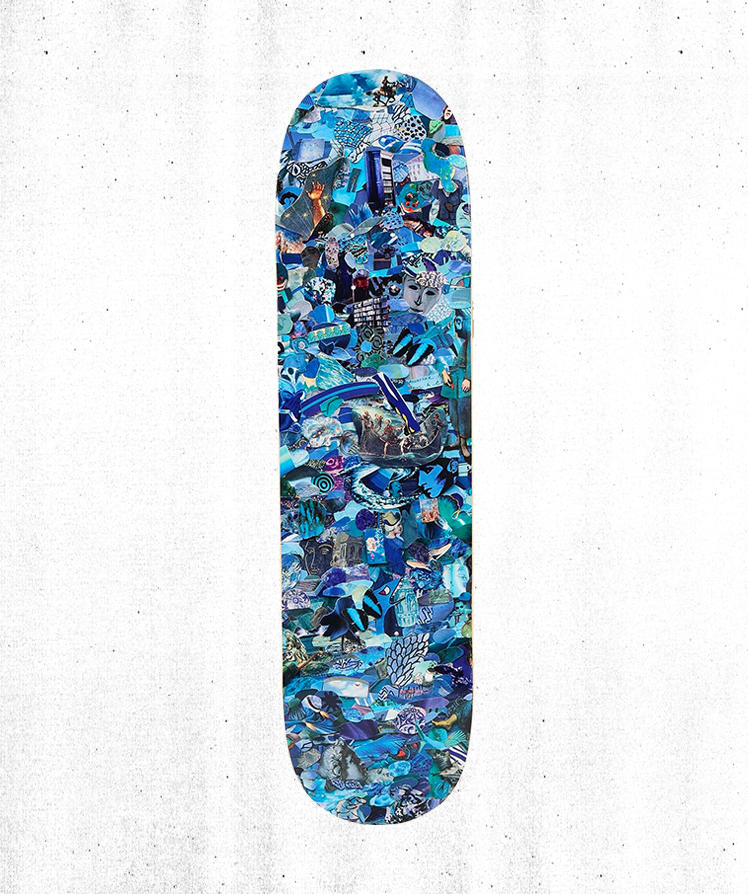



YOOX presents the Repro: Eight Color Spectrum series reproduced on 8 skateboard decks in numbered edition and signed by the artist in collaboration with The Skateroom . A multiple appropriation of images that make the history of art, an explosion full of life of mastered collages declined in the eight colors of the chromatic spectrum.DISCOVER
Born in 1961, Vik Muniz is a Brazilian artist known for his innovative and monumental use of waste and objects that turn into original works or reproductions of masterpieces from the history of art. His works are present in the most prestigious museums in the world, such as the MoMA, the Tate Museums, the ICP and the New Museum.
THE ARTIST


More Arts News
By YEET MAGAZINE | Updated 0246 GMT (1046 HKT) June 14, 2021


Laura Hofstadter 65-Year-Old Brilliantly Recreates Iconic Art To Prove That Ageing Is Beautiful
Laura Hofstadter photography Laura Hofstadter Artist
- YEET MAGAZINE
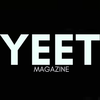
YEET MAGAZINE26 MAR 2021 • 2 MIN READ

An artificial intelligence imagines the "real" traits of historical figures
An artificial intelligence uses deep fake to recreate the "real" traits of historical paintings.When artificial intelligence brings great historical figures to life. When artificial intelligence brings great historical figures
- YEET MAGAZINE

YEET MAGAZINE25 FEB 2021 • 1 MIN READ

A rare portrait of Botticelli sold for $ 92.2 million (around 76 million euros) at auction at Sotheby's.
New York on ThursdayJanuary 28, a world record for any work by the Italian artist. A rare portrait of Botticelli sold for $ 92.2 million (around 76 million euros) at
- YEET MAGAZINE

YEET MAGAZINE25 FEB 2021 • 2 MIN READ

Arts Take The Sky with Air France
For 50 years, Air France has been collaborating with artists from all over the world. Their bold works embody the airline’s dynamism and refinement. The saga continues in the
- YEET MAGAZINE

YEET MAGAZINE2 APR 2018 • 4 MIN READ

Dolce & Gabbana is using drones to model its handbags at Milan Fashion Week.
By Alexandra Ma Dolce & Gabbana used quadcopter drones to model handbags on the runway. You can see some footage of the hi-tech fashion show below. Dolce & Gabbana's latest
- YEET MAGAZINE

YEET MAGAZINE26 FEB 2018 • 1 MIN READ

How Cristobal Balenciaga became a famous handbag designer.
It is hard for us to imagine a notable fashion empire was created by a 16-year-old, but Cristobal Balenciaga did it and did it very well. As early as 13,
- YEET MAGAZINE

YEET MAGAZINE19 NOV 2017 • 3 MIN READ

Is 16th-century charcoal sketch a naked Mona Lisa?
News, breaking news, headline news, latest news, top news ,online news ,video news world, news,travel news ,women's magazine Fashion, Beauty, Psychology, Cooking and Shopping. PARIS (Reuters) - A French
- YEET MAGAZINE

YEET MAGAZINE4 OCT 2017 • 2 MIN READYEET MAGAZINE © 2021





